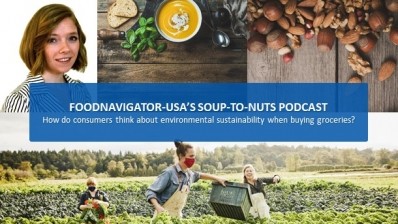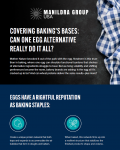Convenience, premium, indulgent & expanded health benefits among pandemic trends that will stick

In response, in recent and upcoming months, some stores may be more willing to stock new products from emerging and challenger brands that were unable to secure meetings with buyers in the initial chaos of the pandemic when top-selling and fast-turning items were prioritized.
But to take full advantage of this opportunity, experts gathered at IFT's virtual annual meeting and expo (IFT FIRST) said, challenger brands will need to meet emerging consumer demands – including a growing need for convenience, permissible indulgence and affordable premium, and increasingly sophisticated healthy lifestyle requirements.
Catering to a ‘whole new generation of cooks’
“Whenever you have a major disruption in the market, it does spur innovation,” Joan Driggs, vice president of content and thought leadership at Information Resources Inc., told attendees at the conference.
For example, she noted, “if you look back at the past recessions, a lot of at-home items were launched. Everything from [teeth] whitening strips to celebrity service skincare … because people couldn’t afford to go to those professional services. We also saw an increase in restaurant-style meals at home, because people couldn’t afford to go to restaurants. And we anticipate that is going to happen again during the pandemic.”
Noting that since the pandemic began and lockdowns forced people into their kitchens – some for the first time – a “whole new generation of cooks are out there” and after preparing millions of meals at home in the past 18 months, many will not revert back to all the out-of-home occasions that existed pre-pandemic, she predicts.
“People like the fact that they can cook. They see that financial benefit and the self-satisfaction,” she said.
Convenience gains importance as mobility returns
But, she added, for challenger brands to fully capitalize on this opportunity they also must address emerging needs – primarily around convenience.
Driggs explained: “As we become fully mobile, we won’t have the same time” that was available when commutes evaporated and social obligations were put on hold. And that is where she said she sees the most potential for near-term innovation – around products that will help people continue to cook at home, but in less time and with less effort.
“I think there is a lot of opportunity for retailers and for manufacturers to still play in that convenience space,” she said.
For example, she noted, during the early months of the pandemics retailers and restaurants partnered to offer consumers more meal kits or restaurant-branded products at the grocery store so that they could bring out-of-home options in-home.
She also noted that many retailers were forced to close hot bars, delis and other fresh-prepared stations that offered consumers premium solutions and convenience at higher margins. While she said she wasn’t sure if those would come back in full force when the threat of COVID-19 passes, she does expect to see more creative packaging of fresh prepared food for grab-and-go convenience.
Premium and indulgent products will remain relevant, but could dip
A closely related trend that emerged during the pandemic and which Driggs predicts will continue to gain momentum in the coming months is around premium and indulgent products.
“We saw spikes in premium and indulgent products,” and while increased mobility and rising prices do to inflation could prompt “a dip in premium products” as consumer seek cost-saving trade-offs, Diggs said, “many of these will stick because people traded up and now it is part of their everyday life.”
Ken Harris, managing partner at Cadent Consulting Group, agreed that even if premium ebbs in the face of inflation, he says many consumers who have experienced the taste and health benefits of more premium ingredients and products will be unwilling to give them up – suggesting they may make cuts elsewhere.
Harris also anticipates a more balanced approach to comfort and health – two ends of the spectrum that consumers embraced during the pandemic, but which can be difficult to sustain long term without drifting towards the middle.
This need for balance is helping to fuel innovations in the high-intensity sweetener category, better-for-you frozen snacks and next generation plant-based options which often are perceived as healthier than animal protein, he explained.
Move beyond immunity claims to support health
The pandemic inspired a massive increase of interest in immunity-boosting products with foods and beverages touting extra vitamin-C, gut-health and other protective health claims flying off the shelf.
As consumers become more sophisticated about the connection between health and diet and continue to look for foods and beverages that can protect them against coronavirus variants and other illnesses, brands will likely need to meet a higher bar – especially if they want to command a premium price, Diggs said.
She recommends that companies talk about the diverse ways that their products can support a healthy lifestyle – not just focus on immunity.
“We need to broaden our definition of health and wellness. From work that we’ve done, we know there is an average of 6.6 wellness goals for anyone,” ranging from better sleep, improved mental acuity and, of course, immunity, she said. “A lot of companies are letting a lot of their attributes sit in the background. These products qualify [for helping consumers meet diverse health goals] but they are not promoted as such.”





















